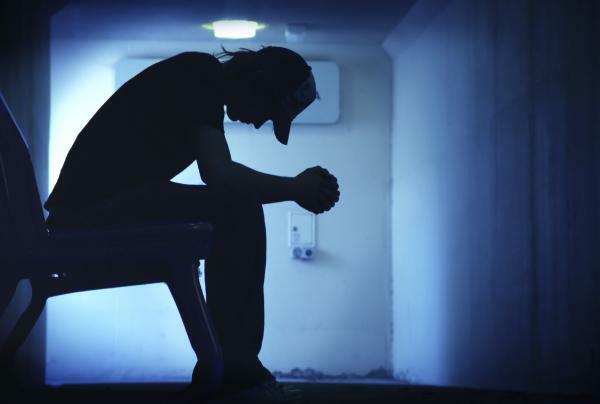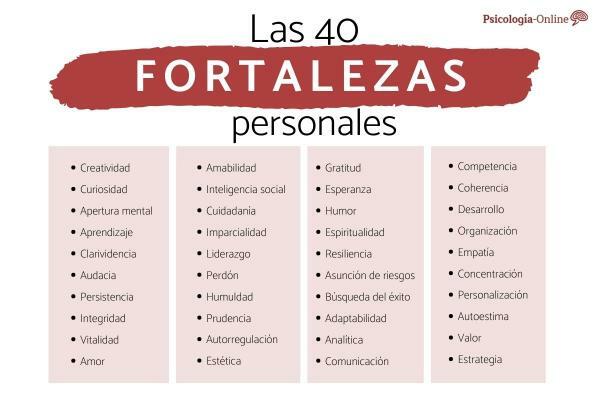
This article addresses some of the deadliest social problems there is at present, the one that brings lamentations and sufferings in the lives of many people: suicidal behavior; This is a health problem that has not been so systematized in schools in order to develop an effective preventive process with all the attention it needs.
From the aspects previously addressed, it is intended to treat the current situation from the Education Sciences for its prevention and the behavior of this phenomenon related in turn to details to be able to develop any preventive-educational study bearing in mind its socio-psycho-pedagogical nature intersectoral in children, adolescents and young people by anyone interested in wanting to preserve the lives of other people with vulnerability factors psychosocial.
The approach to this issue will be supported by the principle of intersectorality and interdisciplinarity, closely linked to some revealing approaches to objectivity and scientificity such as psychopedagogical, that of Life Skills (HPV) of the World Health Organization (WHO-1993), the Clinical-Pedagogical-Sociocultural of Rivaflechas (2014) and the Cognitive-Behavioral Theory of Aaron Beck (1973). The content of this article is part of the author's doctoral thesis, defended at the University of Havana in January of this year.
In this PsychologyOnline article, we will talk about The prevention of suicidal behavior from the Education Sciences.
Index
- Introduction to the study
- Background on the studies of suicidal behavior. Current situation from the Sciences of education
- Criticisms from the perspective of Educational Sciences
- The process of preventing suicidal behavior. Its intersectoral socio-psycho-pedagogical essence in children, adolescents and young people
- Conclusions
Introduction to the study.
Suicidal behavior is still a social problem; one of these flagella considered as the most extreme action of violence, the one that has brought up suffering over the years to parents, neighbors and teachers, drawing attention to the characteristics that distinguish, it is self-violence because it is an act in which the aggressiveness felt towards the environment or towards another person is projected against oneself, this It is still a very subjective problem, quite complex and intimate, unfortunately not investigated from the pedagogical context with the strength that really required.
The specialized literature throughout history has denominated it in several ways among these: suicide, ipsación, parasuicide, self-violence, suicide attempt, self-inflicted injury among others, however, in recent years there has been increased use of suicidal behavior term based on the criteria that this is a process, which goes from ideation in its different expressions, through threats, gestures and attempts to suicide.
In the last two decades it has been observed in various regions of the world, a gradual and constant increase of suicidal behavior in adolescents. In this sense, it is no longer only worrying, among other situations, the consumption of alcohol and drugs, the difficult access to labor market, school dropout, teenage pregnancy and family disintegration as situations independent; but also the coexistence of more than one of these factors that impel the adolescent to try or succeed in committing suicide.
The importance of know the sociocultural and psychosocial context in which this behavior occurs, in order to identify the population groups at risk and to be able to design specific health actions both of a preventive nature and of timely care.
If the suicide numbers are alarming, more so are the attempts. Researchers state that around 10 suicide attempts are made worldwide for every suicide, with an estimated 12,000 suicide attempts made every day in the world. It is not a secret for anyone that the tendency to suicidal behavior constitutes a social phenomenon, which has been reflected with a higher incidence in schoolchildren aged 14 to 24 years of age, which presupposes the need to solve this problem, not only through the Public health team, but also through the Educational System itself.
This phenomenon is still the most serious of the ethical dilemmas of medicine today, among other things, 50 years ago the adolescents could die, above all, from natural causes, while now they also die from preventable causes such as this one that occupies. In general, suicidal behavior in many adolescents is not conceived as a real wish to die, but rather as a conscious way to get attention, to protest or to express an emotion, which he does not know how to express in another way; which does not prevent these subjects from dying on occasion, when they really did not intend.
Suicidal behavior is voluntary and although the voluntariness of a behavior as complex as this one, gives rise to many conjectures, it undoubtedly tends to be ¨essential for it to be a suicide.
Given the aforementioned, it is necessary to bear in mind the following questions:
- Is this a current problem or has it always been studied?
- What sciences have stood out in your study?
- What role has pedagogy played to be able to act in this direction if one takes into account that this is one of the institutions that present tools to develop an effective preventive process towards the problems that affect the students?
These questions will be answered in this article, which appears in series with very novel epigraphs, but with the intention of demonstrating the shortcomings that exist with respect to prevention from the context educational. For this reason, this material reflects on some aspects related to this important topic, from a pedagogical perspective.
Background on the studies of suicidal behavior. Current situation from the Sciences of the education.
Throughout the history of humanity, several researchers have stood out to study this phenomenon from sciences such as sociology. preceded by Emile Durkheim (1897), and psychology such as Sigmund Freud, (1903) pioneers in studies on the characteristics of the phenomenon. Later others stood out such as: Adler, Litman and Shneidman, (1912 - 1958) among others those who dedicated themselves to looking for the genesis of suicidal behavior.
In more recent years, other specialists have introduced clinical elements relating it to risk factors, signs of suicidal behavior and intervention such as: Weisman (1972), Riera 1989) C. de la Cruz Reyes, (1991), González (1992), Eldrid, J. Olivares (1993) Paykel (1994), Quillán and Rodríguez (1996), Stathan (1998), Balcazar (2000), Lechón (2004), Cruz Campos (2005), Almazán (2006), Maldonado (2005) Robert D. Gibbons, Ph. D. (2007), Quintanilla (2014) among others those who have intervened in promoting mental health from medical institutions but recognizing the possibility of work since school based on the introduction of genetic, evolutionary constructivist, environmental, psychoeducational and community models around the theme.
On this basis, studies have been developed in particular by clinical psychology, health and in psychiatrists with some intersectoral involvement by authors such as: Pérez (1998), Miranda, Vargas Fajardo, Mesa Lurente (2001), Reyes Sigarreta (2003), Ribot Reyes (2005), Gil Ph (2006), Sarmiento Falcón and Vargas Polanco (2007), García Peña (2007), Dastres M. (2007), Pérez (2009), Soto, Mercado, Serrano, Santana and Infantes Pérez (2010); particularly in the municipality of San Luis, Santiago de Cuba, the graduates: Ruiz Soca (2012), Marrero (2013) and Maide (2015) with emphasis on the treatment and rehabilitation of patients from community intervention and epidemiological.
With a certain connection from the pedagogical context, there are works related to the educational and school prevention about the relationship of the school with the family and the community, in addition to the School Council, standing out: Castro and Llanes (2007), Godínez (2010), Ortega Rodríguez, Betancourt Torres, García Ajete (2011), Díaz, Castro Alegret, Castillo Suárez, Núñez Aragón and Padrón Echevarria (2012) between others. Following this logic, work has been carried out on the implication of prevention and School Health with an emphasis on health promotion; among these: Borrero (1998), García Leyva (2001), Betancourt (2002), Batista (2008), Portuondo (2009), among others.
Educational prevention in Cuba has developed a lot towards violence, being systematized by several authors such as: Díaz Atienza (2009), Katherine (2010), Santisteban M. (2013) among others providing innovative models and strategies Others have been about psychopedagogical aspects with the implication of risk factors, protective factors, life skills, resilience and the use of clinical - pedagogical methods such as: Munist, Kotliaren, Grotberg (1998), Kazmierczak (1999), Franklin Martínez, Niurka Téllez, Gainza, Caballero (2003), Muñoz Iranzo (2009), Bermejo (2010), Muñoz Torres and Melero (2013) among others, all contributing valuable results in order to seek improvement in citizen training, establishing a dynamic of care and stability emotional.
Taking into account the previous aspects corroborated from the systematization of the author's experience, as he has been working on this subject since the year 1997 in addition to having held various positions in his work activity such as: School Health advisor, methodologist for the Para la Vida program, member of Attention to Minors (CAM), psychopedagogue of the House of Orientation to Women and the Family (COMF) in the Federation of Cuban Women (FMC), as president of the Group of Attention and Social Prevention of a Popular Council in the municipality of San Luis, in addition to the extensive bibliographic review carried out with emphasis on the internet and the consultation with specialists in suicide from Cuba and from different countries, confirm that this problem has not been sufficiently systematized by the Pedagogical Sciences.
The aforementioned has allowed us to consider that at present there are shortcomings from its theoretical, methodological and practical perspective that allow a better work regarding the development of a preventive process with notable educational significance in the detection of adolescents with risk factors for suicidal behavior, their subsequent monitoring, prognosis and evaluation taking into account their vulnerability, an approach that in the It is currently very limited because there are few studies in this regard with the incidence of protective factors at the individual, family and community.
Despite the efforts to know and prevent, multiple myths were found in reviewed articles that, although they were criticized as hindering the development of sciences in this direction, did not Sufficient precise actions have been developed to counteract the criteria and beliefs on the part of society in general; Some of them are: ¨¨ Suicide cannot be prevented as it occurs on impulse¨. Talking about suicide with a person at this risk can encourage him to do so.¨ and ¨Only psychiatrists can prevent suicide ¨ among others.
It is significant to state that despite the existence of the National Program for the Attention and Prevention of Suicidal behavior at the national level and in several countries of the world have contributed to offset the problem, still there are need to refine the treatment activity and compensatory - rehabilitative follow-up with the precision of a correct intersectoral evaluation, which is not carried out jointly between the education and health mainly in which a developing negotiation can be established with a broad participation of social groups capable of achieving cohesion but from the leadership of the school where you work with respect to life skills and the development of a better job in order to achieve a better life project in the teenagers.
It is appreciated that the largest studies carried out have been by the health sector based on biomedical, community, and environmental models and psychosocial, prioritizing descriptive, longitudinal and cross-sectional types with the creation of diagnostic techniques on occasions which they are not linked in depth with psychopedagogical aspects to detect those adolescents who present changes in behavior where the family and the school have their involvement attending to three key elements in the diagnosis process: its timely, differentiating and comprehensive application according to the health situation mental.
The aforementioned problems reinforce by a high percentage the world situation with regard to the behavior of said social problem, since each three seconds a person tries to commit suicide completing - according to the World Health Organization (WHO) the 40 million human beings a year.
Our national territory, like a high percentage of countries in the world, is not exempt from cases of attempts with 13.5 inhabitants per per 100,000 inhabitants in which the adolescent population of both sexes is the most affected with a predominance of the female sex when using the gentle methods such as the ingestion of psychotropic drugs despite the current trend is to catch fire with a high percentage of cases in C. Havana, Holguín, Santiago de Cuba and Villa Clara.
Currently, the province of Santiago de Cuba occupies the third place in suicide attempt in which the municipality of San Luis presents a A rather complex problem situation as there is a high incidence among adolescents between 15 and 18 years of age in both sex. The statistical control carried out from 2003 to 2014 reflected that the total number of people who tried was 982, of them between the ages of 10 to 19 years the sum was 482 adolescents of both sexes, with a predominance of the female, representing a 49.80%.
It was found that in this age range there is a greater number of cases, specifically, at 16 years of age, with 103 adolescents of the total, followed by 15 years, with 90 cases, and at 17 years, with 82. Pre-university education is one of the most affected, in the suicide attempt as corroborated by the data offered by the municipality's statistics; It is commendable to state that to date there have been no faits or suicide that lead to the loss of human life.
The foregoing gives life to the criteria of the Spanish pedagogue Bohórquez Marín when he emphasized that suicidal behavior in the school population is not a topic that is reflected by education as a field discipline. This is precisely evidence of the purpose of the investigation of introduce school paper by developing an intersectoral preventive educational process to contribute to raising the quality of life in high school, to starting from the performance of the pedagogical group with emphasis on the figures of the psychopedagogue, guide teacher and the health advisor in addition to the Health personnel Public, family and members of the School Council given the incidence of adolescents with the greatest number of biopsychosocial risks towards this conduct.

Criticisms from the perspective of Educational Sciences.
Taking into account all that has been said, the present investigation has been conceived, which has made it possible to verify a set of shortcomings through the factual diagnosis, these are:
- Insufficient preparation and awareness by the pedagogical group of pre-university education for the implementation, in an intersectoral way, of the process preventive of suicidal behavior in vulnerable adolescents in an effective way, which allows adequate performance and negotiation to the coordination and planning of actions between the Departments of School Health, Mental Health and the support of the School Council.
- Insufficiencies in the detection of adolescents with risk factors and level of vulnerability to suicidal behavior from the school context, making it impossible to provide adequate care and treatment by levels of prevention in compliance with the intersectoral with psychopedagogical orientation content capable of achieving the formation of protective factors for their lives through the Life Skills Approach (HPV).
- The National Program for Attention and Prevention of Suicidal Behavior, which was created by Public Health, as well as the Program Director of Health Promotion and Education of the MINED in addition to preventive and intersectoral investigations performed, they do not specify the required procedures so that their actions take place in the school and proceed to participatory and personalized intervention.
- Existence of myths around the manifestations of suicidal behavior in the adolescence stage by the family, the school and the community, which considerably hinder the prevention of said social phenomenon.
At the base of the aforementioned insufficiencies lie theoretical uncertainties, attributable to the limited development of knowledge of the sciences called for. offer foundations and arguments that promote the understanding of the nature and essence of suicidal behavior to enrich the Sciences of the Education; this aspect results in the existence of an epistemic contradiction of the problem, manifested between the multidimensional and intersectoral nature that currently requires attention and educational prevention to the Facto-vulnerability of pre-university adolescents towards suicidal behavior and insufficient preparation and coordination to achieve this purpose from the school.
The process of preventing suicidal behavior. Its intersectoral socio-psycho-pedagogical essence in children, adolescents and young people.
Prevention of suicidal behavior It must be developed as a whole process in which the functional structure systemic action is completed, so that there is interdependence between prevention, school and the compliance with the principle of intersectorality, so as to comply with philosophical categories of Marxist orientation such as knowledge of cause-effect, the general, the singular among other.
That is why this position is approved, defined as a dialectical process of systematic, anticipatory orientation, continuum of the diagnosis and the intervention that derives from it, where it is integrated into an interactive and socialized context consequently directed to the formation and strengthening of qualities, motives, interests, feelings, values, intellectual capacities and attitude in children, adolescents and youths.
There are several that can induce this preventive process to have a socio-economic nature. psycho-pedagogical of an intersectoral nature for its implementation in the educational context, these They may be:
- Keep in mind the psychopedagogical approach, conceived by Cuban specialists, who in essence must conceive the process of diagnosing each and every adolescent in order to subsequently proceed to the intervention but with the opportune educational orientation, where the characterization is the most effective possible identifying the psychosocial vulnerability factors. In this it is necessary to work from the school with the family and the community. In turn, with very psychological aspects such as: motives, interests, feelings, thoughts, values, intellectual capacities and attitude in students, among others.
- The Life Skills approach (HPV) of the World Health Organization (WHO-1993) which takes into account cognitive, emotional and social skills those that in one way or another can lead to the anticipation of the suicide attempt if applied with the required methodology.
- The Clinical-Pedagogical-Sociocultural approach by Rivaflechas (2014) where it becomes effective to be able to act with elements of a clinical nature from the school, where its main support for the operational development of a group of actions, the Department of School Health for Education and the Department of Mental Health for Public Health where Blanco's theories of socialization (2001) are present. This aspect must be taken into account based on customs, level of preparation and level of interaction between sectors so that the principle of intersectorality can be fulfilled.
Each of these approaches cannot be developed in the preventive process, if in turn, Aaron's Cognitive-Behavioral theory is not used. Beck (1973), who considered for the depression pull, the relationship of the triad which affects his thoughts towards an edge negative: Rejection of oneself (Inappropriateness, more defenseless, susceptible, pessimistic and useless people are reflected.), that of rejection of the world where they express or have criteria of perceiving the hostile world, of rejection, and with insurmountable obstacles) and the last one is rejection of the future where the adolescent sees the insurmountable expectations of him, with much failure, pessimism, blocked, failure.
He himself stated that the main symptoms are motivational (delay in the activity of voluntary responses), cognitive (the belief that one's behavior does not exert control, nor can it modify the situations- interactions responsible for the feeling of hopelessness) emotional (existence of sadness, helplessness, aggressiveness, hostility etc. ) and low self-esteem (the expectation that other people can achieve significant results while they cannot feel inadequate, undesirable and to some extent guilty.
All the aforementioned are tools that, from the author's conceptions in his doctoral thesis related to the subject of this article, allow personal growth, resilience and self-knowledge, thanks to the harmonious combination of these approaches in a strategy or methodology. The results obtained in this direction were meritorious, that is why they are made known so that the interested parties can transcend in this direction.
These aspects are currently in force by offering a contextualized vision in the educational dimension, as a permanent practice of wanting to anticipate the behavior suicidal from school, where educational sciences such as psychology, sociology and educational anthropology contribute to anticipation in an interdisciplinary way, By conceiving the human being as the architect and protagonist of his personal growth process in harmony with his context, and not in the mere relationship with the absence of disease, this This position is reconceptualized by the World Health Organization, which also includes respect, encouragement and norms that lead to defining a lifestyle based on freedom and the fullness.
In this way, manifestations of suicidal behavior can be countered from a quality education, This requires a solid preparation of the teacher and the personal example of this professional, considering educational prevention as a component of educational work.
By assuming these positions means expanding the frameworks of educational prevention, from dialogue and attention to diversity Venet, R. (2003) as a mechanism for citizen training as a process of education for peace, as an expression in the subject of training values such as solidarity, cooperation, justice, acceptance of differences and respect for the rights of others, which are they become mediators of the relationship between people and regulators of the constructive resolution of conflicts interpersonal.
These approaches that conceive prevention as a dimension of educational activity, privilege strengthening the personological resources of children, adolescents and young people such as resistance, perseverance, among others and urges educational institutions to provide timely, accurate information and the promotion of activities to promote inappropriate behavior change, which enhances the development of the personality.
A preventive process cannot be developed without knowledge of the risk factors for psychosocial vulnerability which together with the instruments for the diagnosis will contribute to obtaining better knowledge of the teenagers. Sintes (1990) with respect to this aspect stated the following: " In order to prevent, it is necessary to have knowledge about the risk and its implications on health, in order to then be able to modify attitudes, behaviors, norms and family conditions that facilitate this work."
According to the author of this article, at present the most significant theoretical trends on educational prevention point to considering the need to achieve the deepening of the study of protective socio-educational protection factors, strengthened by the HPV approach, approached previously, this aspect not worked with the application of theoretical - methodological content capable of achieving the desired transformation from school in relation to the phenomenon under study, where the adoption of a methodology that adequately combines the neutralization of risk factors with the strengthening of protective factors, an idea also conceived by Suárez E. N (1990) but not materialized in practice.
The educational prevention with an intersectoral nature to be developed from the school, for it to take effect requires the intersectoral activity mediated through the work of the Public Health and Education sectors as protagonists par excellence for the development of the preventive process, which must be developed attending to two phases: from the doctor's office family doctor and from the pedagogical process, where the family is organized and guided by the school council, a body that gives intersectoral character to work from the school; This requires organization, coordination and planning of the work supported by educational-community negotiations.
In spite of the existence of closeness at work Among these sectors, Dr. María A. Torres Cueto (2012),, stated on one occasion, that theoretical details are required in the system of their concepts and categories fundamentally, to work in a more harmonious way. as in the methodological implementation that is carried out in school practice where it is a question of pedagogizing health personnel to increase the educational efficiency of their exercise professional and in the same way prepare teachers as health educators, so that they are able and able to teach their students, reaching the family.
Vera Bueno (2003), in her thesis about the work of the teacher guides, despite not working with the prevention of suicidal behavior, he referred to the coordination work, not as a principle, but as a condition to be able to act jointly within the schools; he expressed the following:
coordination function is distinctive (…) It is established and acquires significant importance as it is the way to establish the necessary coherence of the educational influences between the different educational agents in charge of the integral formation of the adolescent (...)
It is important to state that nothing that has been explained so far can be developed with quality based on prevention education of suicidal behavior from school, if the levels of prevention studied by several authors; Caplan (1966) released one that is widely used today:
- The Primary prevention, is the one that is aimed at preventing inappropriate behaviors from occurring. In it is implicit the preparation and educational orientation to diversity. It is where behavioral risk factors are identified.
- The secondary prevention It is aimed at treating inappropriate behavior once detected, to reduce its effects where family participation is important.
- Finally the tertiary prevention, It is aimed at the participation of other institutions or sectors, assigning it an intersectoral and multidisciplinary nature. (psychologist, therapist, instructor, teacher, among others) with a view to enhancing corrective-compensatory care- rehabilitative.
The Latin American teacher must penetrate even more in the family culture and maintain that it is the responsibility of all adults ensure that our adolescents and young people do not reach destructive or extreme decisions and be able to help them at the moment timely.
To educate is to fully develop the potential of the person. The family, as the first area of encounter with culture, has a prominent place in the socialization process that has to run from the beginning. heteronymy until reaching, at the end of their adolescence, autonomy, differentiation and the ability to make decisions, take responsibility for their consequences and define your own identity.
It becomes necessary know the particularities of these adolescents who are our neighbors, colleagues, friends, students and family. It is not that teachers underestimate the possibility of the event occurring, but rather that they work more organized from the class and that they know how to face the problems that these present without the need for rejection and discrimination. Every teacher must know that every suicide attempt by an adolescent is directed at another and tries to express a demand for affection, love, to be heard and recognized as a person. It should be interpreted as a question that requires an answer.
Conclusions.
The epistemological insufficiencies present with regard to the prevention of suicidal behavior from the educational context where intersectoral work presents limitations in this direction; in turn, it is important that the process of this type of prevention be perfected from the school context, in which all information must be educational, preventive and formative based on the need that exists to develop an intersectoral and multidisciplinary action from practice educational, combined with a psycho-pedagogical theory, various approaches such as HPV, (WHO-1993), the Clinical-Pedagogical-Sociocultural (Rivaflechas -2014) and the Behavioral-Cognitive theory (Aaron Beck 1973) that establish dialogic relationships, conducive to respect and sensitize those affected to the value of the lifetime.
To achieve effective results In the prevention of suicidal behavior, it is significant that the protagonism is from the school in interaction with the family and the community, given the existence of the connection between Public Health and Education, represented by the departments of Mental Health and School Health in addition to the support from the School Council, which in fact are professionals capable of conceiving, planning, organizing and executing educational teaching work, which is needs to turn education into a true procedure to achieve social, cultural and psychological development in function of growth personal.
This article is merely informative, in Psychology-Online we do not have the power to make a diagnosis or recommend a treatment. We invite you to go to a psychologist to treat your particular case.
If you want to read more articles similar to The prevention of suicidal behavior from the Education Sciences., we recommend that you enter our category of Clinical psychology.
Bibliography
- Barrero A. Pérez Sergio. Practical Guide for the evaluation of suicide risk. WWW. Monograph. com.
- Chacón Vega Reynaldo. The school culture and the preventive activity of suicidal behavior http://www.monografias.com/trabajos82/cultura-escolar-y-preventiva-conducta-suicida/cultura-escolar-y-preventiva-conducta-suicida.shtml. Monofrafia.com.
- Chacón Vega Reynaldo. School prevention of suicidal behavior in adolescents.
- __________________. Preventive - methodological model for managers who have adolescents in their centers with precipitating risk factors for suicidal behavior. Accredited with ISBN 978-959-18-0396-2.
- ____________________School prevention of suicidal behavior through intersectoral activity. Thesis as an option to the scientific degree of Doctor of Education Sciences. University of Havana. 2016.
- Escorza Escudero Tomás. Model approaches and strategies in the evaluation of educational centers Institute of Education Sciences [email protected] University of Zaragoza / 2008.
- Guibert Reyse Wilfredo. Health promotion in the face of suicide. Cuban Journal of Comprehensive General Medicine ISSN 0864-2125 on-line version / 2008. http://www.monografias.com/trabajos82/sistema-estrategico-prevencion- suicidal-behavior / strategic-system-prevention-suicidal-behavior.shtml. Monografia.com.
- Martínez Jiménez, A Behavior of child-adolescent suicidal behavior. Cuban Journal of Comprehensive General Medicine. ISSN 0864-2125 on-line version. 2007
- Paz Aguilera, Armando. "Ethical character of the Cuban scientific-technical development project", electronic journal: "Contributions to Social Sciences" (ISSN: 1988-7833), indexed in IDEAS-RePEc. Available in: http://www.eumed.net/rev/cccss/11/papa.htm. University of Malaga, Spain, March 2011.
- Paz Aguilera, Armando. "The philosophy of education in school", electronic magazine: "Cuadernos de Educación y Desarrollo" (ISSN: 1989-4155), indexed in IDEAS-RePEc. Available in: http://www.eumed.net/rev/ced/25/apa.htm. University of Malaga, Spain, March 2011.
- Paz Aguilera, Armando. Philosophical, psychological and pedagogical considerations on the formation of values. electronic journal "Contributions to the Social Sciences" (ISSN: 1988-7833), indexed in IDEAS-RePEc, Socionet, Q · Sensei, Scientific Commons. Available in: http://www.eumed.net/rev/cccss/11/asb.htm Malaga on January 24, 2011.
- [1] Sintes Álvarez Roberto. Comprehensive General Medicine Topics. Volume. C. Havana: Editorial de Ciencia.


